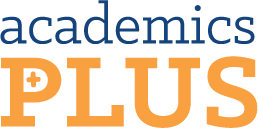Living with ADHD as an adult can be incredibly challenging. From struggling to stay focused and organized at work to feeling overwhelmed by daily tasks and responsibilities, it can often feel like an uphill battle. However, there is hope. By working with an ADHD coach on a weekly basis, individuals can develop the skills and strategies needed to manage their symptoms more effectively and improve their overall quality of life.
One of the biggest challenges faced by adults with ADHD is staying on top of their daily responsibilities. Whether it's meeting work deadlines or keeping up with household chores, it can be difficult to stay organized and focused. This can lead to feelings of frustration and overwhelm, which can in turn exacerbate ADHD symptoms.
Another challenge faced by adults with ADHD is managing their time effectively. It's not uncommon for individuals with ADHD to struggle with time management and procrastination, which can make it difficult to complete tasks on time and meet deadlines.
In addition to these challenges, adults with ADHD may also struggle with maintaining focus and attention. This can make it difficult to stay engaged in meetings or conversations, or to complete tasks that require sustained concentration.
Fortunately, ADHD coaching can provide the support and guidance needed to overcome these challenges and improve overall quality of life. By working with an ADHD coach on a weekly basis, individuals can develop the skills and strategies needed to manage their symptoms more effectively.
One key benefit of ADHD coaching is that it provides a sense of accountability. By meeting with a coach on a weekly or biweekly basis, individuals are held accountable for making progress towards their goals. This can be incredibly helpful for those who struggle with procrastination or have a hard time staying motivated.
Another benefit of ADHD coaching is that it provides a safe and supportive environment for individuals to explore their challenges and work towards meaningful change. Unlike traditional therapy, which may focus more on exploring the root causes of one's struggles, ADHD coaching is all about taking action and making concrete changes in one's day-to-day life.
ADHD coaching can also help individuals develop specific skills and strategies to manage their symptoms more effectively. This might include things like practicing mindfulness, learning how to break down tasks into smaller, more manageable steps, or developing better organizational habits.
Ultimately, the goal of ADHD coaching is to help individuals with ADHD improve their overall quality of life. By developing the skills and strategies needed to manage their symptoms more effectively, individuals can reduce feelings of overwhelm and frustration and improve their ability to focus and stay on track.
Of course, ADHD coaching is not a magic cure-all. It takes time and effort to develop new skills and habits, and not everyone may be ready or able to commit to weekly coaching sessions. However, for those who are able to give ADHD coaching a try, it can be an incredibly valuable tool for managing one's symptoms and improving overall quality of life.
If you're considering ADHD coaching, I'd love to help you on this journey. You can
It's also important to remember that ADHD coaching is just one of many resources available for those with ADHD. Other resources include support groups, online forums, and self-help books. It's up to each individual to decide which resources are best for them and their unique needs.
Living with ADHD as an adult can be incredibly challenging, but it's important to remember that you're not alone. There are millions of people out there who struggle with ADHD, and there are countless resources available to help you manage your symptoms and live your best life. Whether you decide to pursue ADHD coaching or another form of support, the most important thing is to take action and start working towards meaningful change. With time, effort, and the right support, it is possible to manage ADHD symptoms and lead a fulfilling, successful life.













